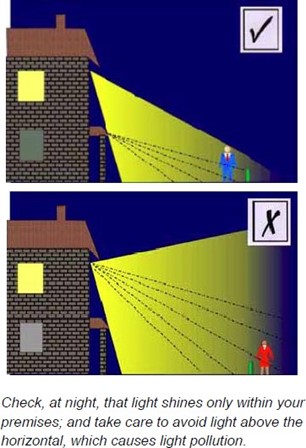
Light Nuisance
Hawkesbury City Council does not regulate light spill and glare emanating from residential properties. However, Council Staff may be able to make contact with the occupier to request that the light be redirected or rectified. Generally, lighting is considered a private nuisance and can be regulated through the court system using case law.
It may be possible for Council to regulate light and glare that comes from commercial properties through their development consent. This includes advertising signs, security lights and general light spill.
Light spill from street lights should be reported to Endeavour Energy (Ph: 133 718). Lighting from Council-owned facilities should be reported to Council.
Resolving a neighbour dispute
The Community Justice Centre (CJC) offers advice on how to work out problems between neighbours, including matters like nuisance lighting.
Contact the CJC via:
- Phone: 1800 990 777
- E-mail: cjc-info@justice.nsw.gov.au
- Website: https://www.cjc.justice.nsw.gov.au/
Reducing light and glare
 Tips to reduce light and glare emissions include:
Tips to reduce light and glare emissions include:
- Install timer or sensor lights and ensure lights are turned off when not required for safety or security reasons or when enhancing a night-time scene.
- When buying external lights, consider their brightness. The lower the brightness, the less likely they will impact on neighbours. Warm white, lower lumen, light- emitting diode (LED) light globes should have less impact on neighbours.
- Locate the light source as far as possible from neighbours and away from sensitive areas (e.g. bedroom windows and living areas).
- Avoid placing the light near a light reflective surface and use existing features to hide the light source from view.
- Wherever possible, direct light downwards, not upwards, to illuminate the target area. If there is no alternative to up-lighting, using shields will help keep spill light to a minimum.
- Use specifically designed lighting equipment that, once installed, minimises the spread of light near to, or above the horizontal.
- Don't over-light. Less is more for your neighbours and your electricity bill.
- Ensure that the main beam angle of all lights directed towards any sensitive place is kept below 70 degrees. You can also use light shields to help minimise glare and the impact on neighbouring properties.
Further References
The (UK) Institute of Lighting Professionals Guidance Note 1 for the Reduction of Obtrusive Light.
Page ID: 211197
